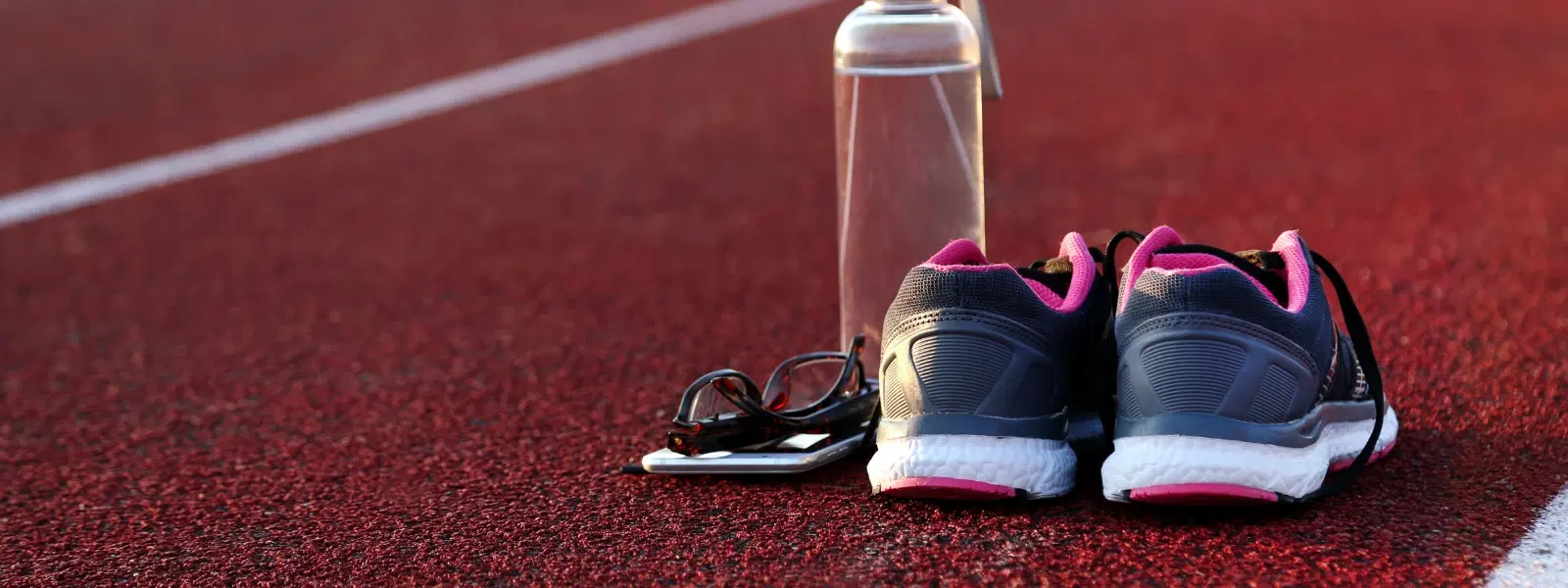
Footwear Guide
•04 min read

Running can transform from a simple exercise into a stylish expression of determination, and the right running shoe sole plays a pivotal role in this transformation. By understanding which sole is best for running shoes, you can enhance your performance, boost comfort, and express your identity as a bold, energetic runner. This guide walks you through a thorough checklist, ensuring you know exactly how to choose running shoe soles that match your style and needs.
A running shoe sole is much more than a base; it forms the bedrock of every stride you take. The best running shoe soles provide improved grip and traction in running shoe soles, help prevent injuries with shock-absorbing running shoe soles, and ensure durability during everyday use. They act as the primary barrier against uneven terrain and absorb the shocks that might impact your joints. Investing time to understand the key components of running shoe sole materials not only contributes to your comfort but also to your performance on the track, road, or trail.
The main structures that form a great running shoe sole include:
Outsole: This part provides the necessary grip and traction to keep you safe on different surfaces.
Midsole: Responsible for cushioning and shock absorption, minimizing impact during runs.
Insole: Offers extra comfort and support, ensuring a snug fit throughout your journey.
There are various types of running shoe soles available that cater to different running styles and terrains. Knowing the types of running shoe soles helps you choose running shoe sole materials that not only look great but also perform exceptionally. When exploring best running shoe soles, it’s crucial to understand both the material and design. Essential options include rubber, EVA, TPU, and hybrid soles, each offering unique benefits such as durability, lightweight comfort, and flexibility for runners on the move.
Here are some popular types of running shoe soles that can influence your running experience:
Rubber Soles: Known for their durability and grip, ideal for runners who need reliable performance on wet or uneven roads.
EVA Soles: Lightweight and shock-absorbing, these soles provide comfort and flexibility during long runs.
TPU Soles: Offering excellent stability and durability, TPU soles are great for those who run on rugged terrain.
Hybrid Soles: Combining multiple materials, these soles adapt well across multiple terrains and varied running conditions.
Different terrains require different features. When selecting running shoe soles, consider the following:
Road Running: Focus on lightweight running shoe soles with a balanced grip for smooth surfaces.
Trail Running: Opt for durable soles for running shoes with deep lugs to counter rugged and rocky paths.
Track Running: Minimalistic and agile designs are perfect for speed and controlled movements on flat surfaces.

The choice of material in running shoe sole materials is crucial as it affects weight, flexibility, and the overall durability. Each material offers distinct advantages and challenges. Lightweight running shoe soles often combine the need for speed with the comfort and durability required for long runs. Understanding which sole is best for running shoes involves weighing factors such as shock absorption, flexibility, and the ease of movement provided by materials like rubber, EVA foam, polyurethane, and carbon rubber.
Popular materials used in shoe soles include:
Rubber: Offers superior durability and grip. Perfect for ensuring traction, especially during wet conditions.
EVA Foam: Delivers a lightweight and comfortable feel with excellent shock absorption.
Polyurethane: Known for its long-lasting performance and stability during high-impact activities.
Carbon Rubber: Provides extra durability in high-wear areas, enhancing the overall resilience of the shoe.
When evaluating materials, keep these pros and cons in mind to decide which sole is best for running shoes based on your requirements:
Rubber is excellent for grip but may add to the weight.
EVA Foam ensures comfort and lightness but can be less durable over time.
Polyurethane enhances durability but may reduce flexibility.
Carbon Rubber delivers long-lasting use but might increase the sole's heft.
This checklist is designed to help you decide how to choose running shoe soles that match your style and performance needs. Whether you’re a beginner or an experienced runner, the right sole can dramatically transform your running experience. The following guidelines ensure you capture every factor needed for making a confident decision.
Before making a choice, consider your individual running needs:
Are you a beginner or an experienced runner?
Do you have a tendency to overpronate or underpronate?
Are your runs typically long, short, or a mix of both?
When scouting for the best running shoe soles, look for these key attributes:
Grip and Traction: Crucial for maintaining control on slippery or uneven surfaces.
Shock Absorption: Minimizes impact and protects joints, essential for both casual jogs and intensive runs.
Flexibility: Allows natural toe movement and enhances overall comfort during a run.
Durability: Ensures your soles perform consistently even with frequent use.
Comfort: A comfortable sole alleviates pain and contributes to a smoother running experience.

Different terrains demand different characteristics from your running shoe soles. Road runners benefit from lightweight soles with moderate grip, while trail runners need durable soles with deep lugs for improved traction. Track runners, on the other hand, thrive with minimalistic soles that enhance speed and agility.
Expert Tip: "The right running shoe sole isn’t just about comfort—it’s about optimizing performance and reducing the risk of injury. Always test your shoes on the terrain you plan to run on before committing to a purchase."
Evaluate your running style, terrain, and comfort preferences. Select a sole that offers a balance of grip, shock absorption, and durability.
Rubber and carbon rubber are widely recognized for their durability in running shoe sole materials.
While lightweight running shoe soles enhance speed and agility, they may not always offer the same level of durability as heavier alternatives.
In some cases, yes. However, this depends on the shoe’s design and the manufacturer. Always check if the shoe allows for outsole replacement.
Beginners are advised to use EVA foam soles. These provide the right balance of comfort, shock absorption, and moderate grip to support a smooth running experience.
Choosing the best running shoe sole involves carefully evaluating your running style, the terrain you frequent, and the features that matter most to you. With this checklist, selecting among the best running shoe soles becomes a straightforward process, ensuring you enjoy optimal performance, durability, and comfort. Embrace your running journey with confidence, knowing that a well-chosen sole can truly elevate your experience and drive you toward your goals.